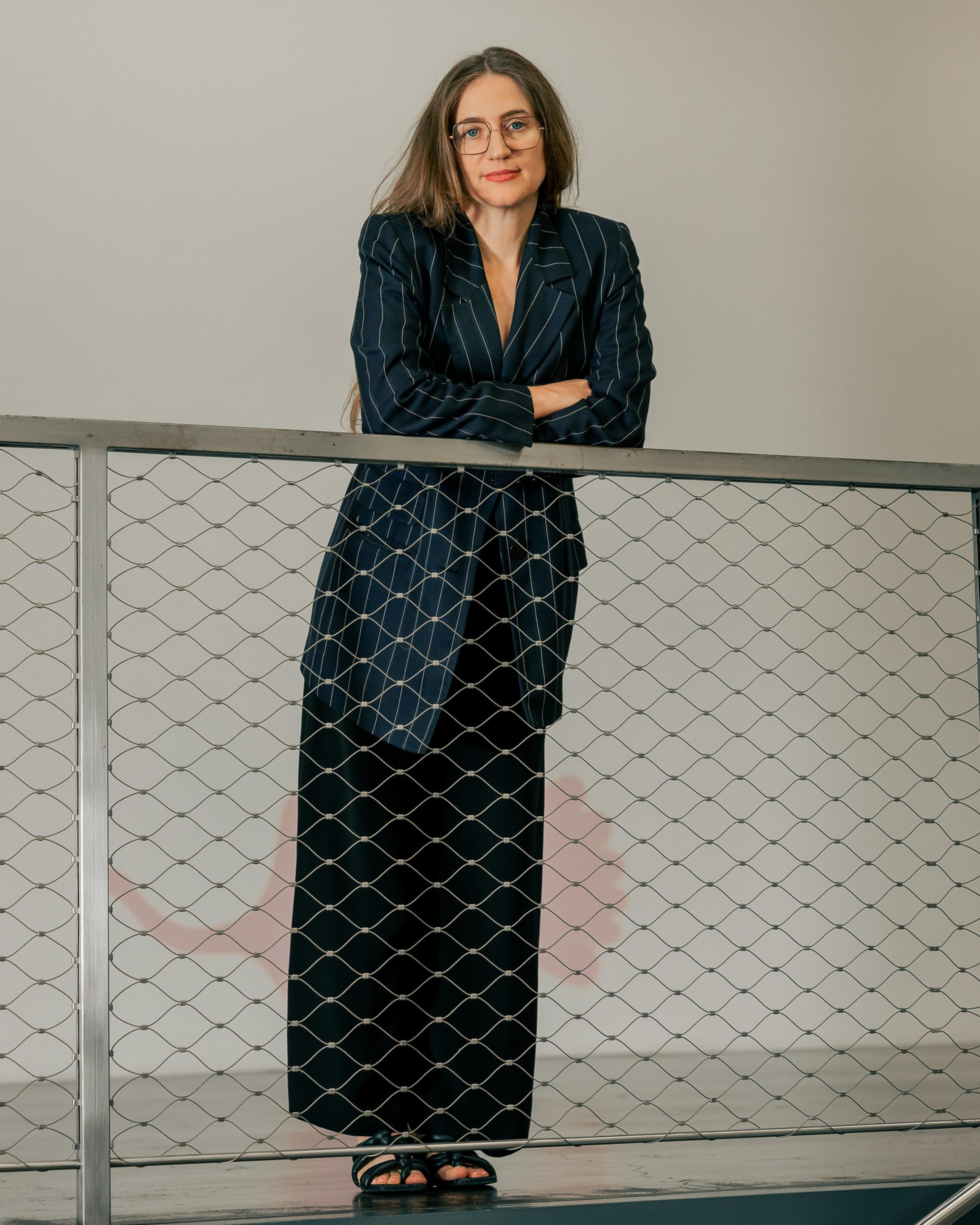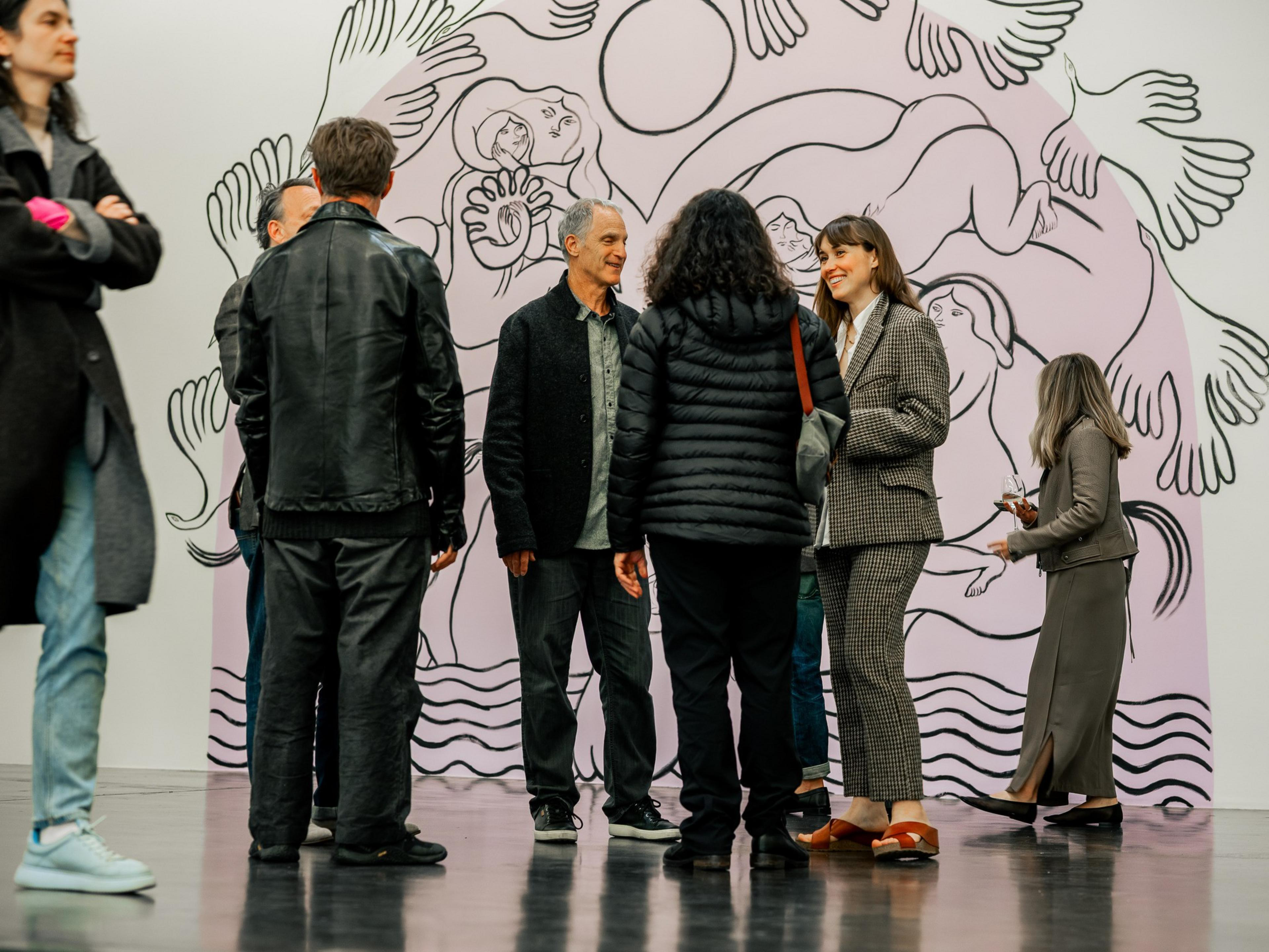The walls were primed. The artist, London-based figurative painter Jessica Jane Charleston, had flown to San Francisco for her solo show at CULT Aimee Friberg in the Design District, set to open April 24.
There was just one problem: the eight largest paintings were stuck in customs in Los Angeles. These works remain ensnared in the backlog besieging shipping company DHL, thanks to sweeping tariffs and stringent customs regulations imposed by President Donald Trump.
Though Charleston’s gallerist Aimee Friberg held out hope that the paintings might clear customs in time for the opening reception, it became apparent earlier this week that she needed to make alternate plans. Friberg installed smaller drawings and a large tapestry she wasn’t originally planning on showing. Where the missing paintings should have hung, Charleston hand-painted the walls with a sweeping mural.
The confusion over Trump’s on-again, off-again global tariffs that has roiled economies has hit San Francisco’s art industry, too, sparking customs congestion that has trapped valuable artworks at U.S. ports.


Friberg had shipped Charleston’s eight large works from London in mid-March, and they were scheduled to arrive one week before the opening.
But four days after the expected delivery date, she received an email from DHL saying the paintings would arrive by the previous Friday — a deadline that had already passed.
When she called DHL to inquire about the status of the paintings, she was told that due to new tariffs on packages valued at more than $800, DHL was experiencing a surge in custom clearances leading to a logjam of parcels left in limbo (opens in new tab). The DHL representative told Friberg the eight paintings would not be leaving Gateway Los Angeles anytime soon.
“They didn’t have any more information, and they weren’t quite sure what was going to happen or how long it would take to resolve,” Friberg said.
The same day DHL sent its first email to Friberg, the company announced (opens in new tab) it would temporarily suspend shipments to the U.S. valued at more than $800.
“[The tariffs] caused a surge in formal customs clearances, which we are handling around the clock,” DHL said in a statement. “While we are working diligently to scale up and manage this increase, shipments over USD 800 — regardless of origin — may experience multi-day delays.”
Since then, Friberg said, DHL’s documentation requests have been erratic, with an unusual number of obscure forms. On Wednesday, the night before the opening, the company invited her to attend a webinar on the “constantly evolving presidential tariffs.”
“I’m not sure what to believe,” Friberg said, adding that this is the messiest experience she has had in her 12 years of using DHL to ship artwork.
Delays and confusion
The art world, like other industries, is bracing for the worst at an already precarious time for the art market (opens in new tab). And like those in other industries trying to prepare for Trump’s global trade war, art industry people can do little more than guess. In recent weeks, some international buyers “personally flew artworks into the U.S. three days before the tariffs went into effect for expediency,” according to an art world insider who spoke on the condition of anonymity.
Artwork is usually exempt from tariffs, but nothing is “usual” about Trump’s approach to global trade. On April 2, the White House issued a fact sheet (opens in new tab) on his national economic emergency, referencing article 50 USC 1702 (opens in new tab), which says certain items will “not be subject to reciprocal tariffs.” These include — but aren’t limited to — “artworks,” “photographs,” and “posters.”
However, there’s confusion about whether these exemptions still hold under Trump’s April 5 executive orders to impose 10% tariffs on all goods.
“There isn’t a business or client relationship, small or large, that I don’t hear about daily that hasn’t been affected by the tariffs,” said internationally renowned designer Yves Béhar, who founded the San Francisco-based design firm Fuseproject. “Everything that arrives in San Francisco gets delayed or is more expensive. It’s creating a slowness and making business less straightforward.”
Béhar added that his international clients are wary of traveling to the U.S. at all, instead opting to meet at Fuseproject’s Lisbon office.
Claudia Altman-Siegel, who has an eponymous Dogpatch gallery, said the tariffs are causing pangs of anxiety.
The Altman Siegel gallery is planning a show for the summer that includes artists who hail from Beijing, Paris, and London. But after Trump enacted 125% tariffs against China earlier this month, “we were feeling like we would have to cancel,” she said. For now, she is planning to go ahead, with fingers crossed.
As for the opening at CULT Aimee Friberg, despite the DHL debacle, the show kicked off in high spirits, with almost every wall adorned with Charleston’s work. Friberg said that once the remainder of the work arrives, she will open a second show to celebrate the artist.
“It feels really, really good in here, and I’m grateful we could find a solution to a situation that’s been extremely difficult,” she said.


